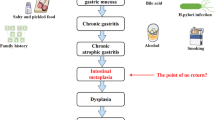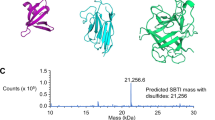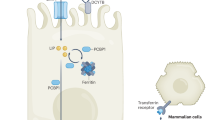Abstract
DURING an investigation of the possible role of chelation in the gastrointestinal absorption of iron in man, we have considered the endogenous ligands which could be secreted into the gut. Gastric juice seemed likely to be an important source because the rapid formation of iron chelates would require a low pH and because dietary iron is split off from protein during acid–peptic digestion in the stomach.
This is a preview of subscription content, access via your institution
Access options
Subscribe to this journal
Receive 51 print issues and online access
$199.00 per year
only $3.90 per issue
Buy this article
- Purchase on SpringerLink
- Instant access to full article PDF
Prices may be subject to local taxes which are calculated during checkout
Similar content being viewed by others
References
Davis, P. S., Proc. Austral. Assoc. Clin. Biochem., 1, 190 (1965).
Author information
Authors and Affiliations
Rights and permissions
About this article
Cite this article
DAVIS, P., LUKE, C. & DELLER, D. Gastric Iron Binding Protein in Iron Chelation by Gastric Juice. Nature 214, 1126 (1967). https://doi.org/10.1038/2141126a0
Issue date:
DOI: https://doi.org/10.1038/2141126a0
This article is cited by
-
Il metabolismo del Ferro
La Ricerca in Clinica e in Laboratorio (1971)
-
Iron Binding Properties of Saliva
Nature (1968)
-
Zur Frage der Regulation der Eisenresorption durch Gastroferrin, ein eisenbindendes Protein des Magensafts
Klinische Wochenschrift (1968)



